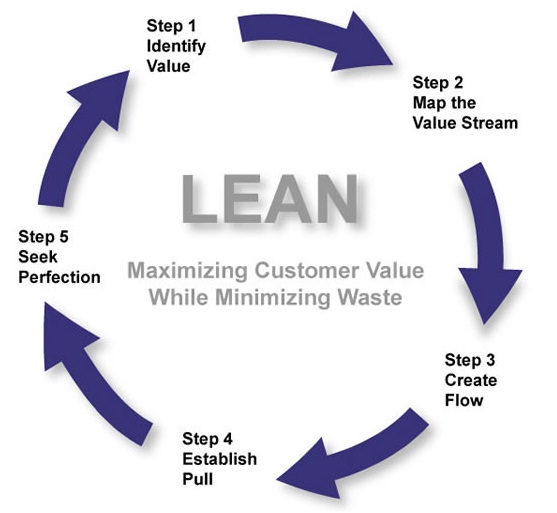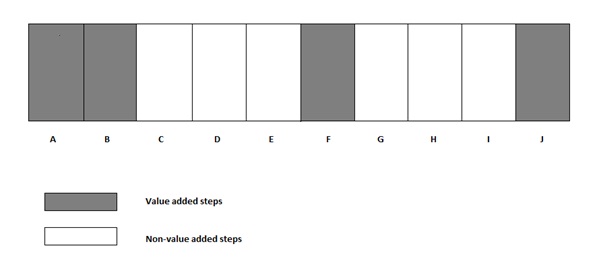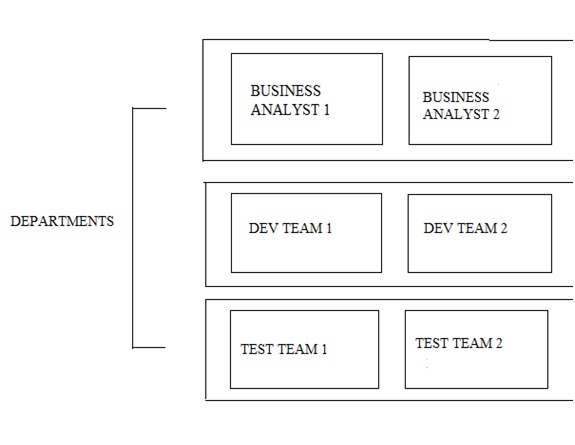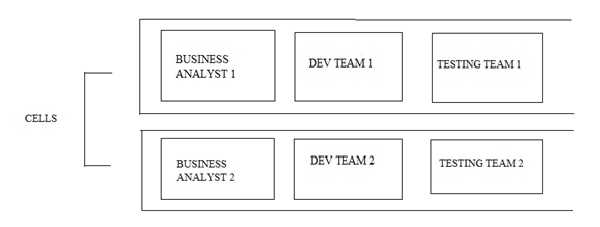- Articles ›
- Operations and IT ›
- Lean For Services Sector Articles
Lean For Services Sector
Toyota is by far world’s best automobile company. Its annual revenue in the year 2010 was close to two times and the number of vehicles sold close to ten times its nearest rival GM. Toyota first came into limelight in the 80s when the world acknowledged the operational excellence of this Japanese auto-company. Japanese cars were lasting longer than their American and European counterparts. It gave better fuel-efficiency as well. Research from the experts attributed the astounding success of Toyota to the way it functioned – the now famous term Lean Thinking.

Lean thinking is a philosophy emanating from Toyota. The pioneering work done by TaichiiOhno and the likes has given the world an excellent way to reach the pinnacle of Operational excellence by the virtues of creating value for the customer, meeting the company objectives and eliminating waste in all forms. Although Lean philosophy has its origins in the manufacturing sector, let’s try and emulate the same in Services sector.
Elimination of waste is at the heart of lean thinking. Let us try and understand forms of waste in a Services organization.
Muda:
It is a Japanese term which literally translates to “waste”. TaichiiOhno despised wastage and identified following forms of waste or Mudas.
1. Overproduction: This implies creating more than required or before it is required by the customer (both internal as well as external). Some of the daily life examples could be advertising in an already saturated market, building houses which do not get sold and then having to sell them cheaply, hotels which run empty for most part of the year etc.
2. Waiting: This refers to individuals and items being forced to wait because of mismanagement or misappropriate allocation of resources. How many Sunday evenings have you spent waiting in queues in a restaurant or a mall, newly recruited employees not contributing because of lack of infrastructure like computers (I am sure most people from IT background would connect to this), forms waiting for days requiring approvals from concerned authorities, waiting for your net or mobile connection to get startedetc.
3. Unnecessary transport: This refers to movement of materials which do not serve any purpose or add any value to the customer. Long email chains with excessive attachments, systems requiring multiple approvalsas is the case in Government offices etc.
4. Over-processing: This refers to efforts which do not add any value. Redundant steps in a process, call centre employees not trained properly are some of the examples we can associate here.
5. Excessive inventory: This is a case of supply of Services or information exceeding its demand or before it’s required. Tons of food being thrown away at the end of a party or a marriage, more IT infrastructure in place, schools and colleges not filled to its capacity etc. In IT companies, many-a-times the code is developed well before the testing team can test it, which adds to wastage.
6. Unnecessary movement:This refers to unnecessary movement of people from one place to another. Customer representatives having to walk long to get brochures, multiple visits by salespersons to get correct documents, multiple visits to government offices to get your job done are all instances of unnecessary movements.
7. Defects: "Getting Right First Time" is the name of the game. If you have to spend time correcting something, it is a huge overhead. Rework of application forms because of incorrect information furnished initially, incorrect delivery of couriers and goods, loss due to systems failure because IT breakdown are some forms of defects that add to wastage.
8. Unused employee calibre:Uneven work distribution, not leveraging the strengths of the employees, decisions being made only by upper management without the involvement of ground workers etc. are all Mudas which should be avoided if an office wants to prosper in the longer run.
Lean Thinking – Antidote to Mudas
It’s no rocket science to realise that lesser the Mudas in your organization, better will it perform. Lean principles advocate Value Stream Mapping as the starting point to wastage elimination. Let us start our exercise by defining value.

Ref: http://www.foxvalleywork.org/WhatsLean.html
Defining Value
A value can only be defined from the point of view of a customer. Whenever you are carrying out any process, ask these questions: “What does the customer want from this process? Am I adding any value to the customer by doing this process?” This defines value.
Identify Value Stream
Next step is to separate value-added steps from non-value-added steps. Let us try and understand value stream mapping by simulating the working of an IT MNC.

A: The client givens the requirement to the concerned department’s Business Analyst.
B: The BA (who is generally from a non-technical background), based on his understanding, briefs the concerned Development Team Leader.
C: There is some communication gap between what the client exactly wants and what the development TL has interpreted. So some time is generally wasted in bringing everyone on the same page.
D: Depending on the project requirements, the development TL gets the required software and other such infrastructure in place.
E: There may be a need for training to the coders based on the specific project requirements.
F: The development team develops the code and sends it to the testing team for testing purposes.
G: The testing team simultaneously tests code of many projects and hence there may be a delay before it actually begins the testing of this project.
H: The testing team may find some bugs and sends it for re-work.
I: The development team fixes the bugs and resends for testing.
J: Once there is a go-ahead from the testing team, the code is deployed on live environment.
From client’s perspective, only steps A, B, F, and J add value. All the other steps are Operational overheads which only add to wastage in the system, at-least from client’s perspective. So why should he pay for it.
“When you buy bananas all you want is the fruit not the skin, but you have to pay for the skin also. It is a waste. And you, the customer should not have to pay for the waste.” – Shigeo Shingo, a key figure in Toyota.
Flow
Once the value stream mapping is done, the next obvious step is to eliminate or at-least minimize the non-value added steps. TaichiiOhno says “All we are doing is looking at the time line, from the moment the customer gives us an order to the point when we collect the cash. And we are reducing the time line by reducing the non-value adding wastes.”
Lean philosophy advocates making the value adding steps to flow in a continuous manner.
Traditional mass-production mentality advocates arranging processes into departments. All similar kinds of processes are clubbed under 1 department as is illustrated below for a typical IT structure. This method leads to a lot of waste in the system as none of the departments has the information about the working of the other departments.

On the other hand,Lean Philosophy advocates arranging the processes into a Cell like structure where every cell can perform all the activities from start to end on its own as is illustrated below.

This will enable complete transparency and information will be Pulled rather than Pushed from one component to another, thereby reducing wastages. Also, pull based continuous system will help uncover hidden problems as inventory, whether in physical form or information, covers inefficiencies in the system.
Lean Tools
- Kaizen: It is the process of continuous incremental improvement, no matter how small and thereby progressing towards the ultimate lean goal of zero wastage. If you are in healthcare sector, your ultimate goal should be on how quickly you can service the customer/patient with optimum results. This could be done by ensuring that once the case arrives in the hospital, there should be minimal lead time. Divide the entire process of serving the customers into modules and try and improve every module at every single stage.
- Jidoko: It refers to built-in quality. Cultivating a culture of stopping to fix the problems at the root, error proofing and delivering right quality the first time will enhance customers’ experience.
- Standardisation of work processes: This will help in maintaining predictability, regular timing and regular output from your processes. This is particularly useful in case of systems which have repeatable methods. If you are in Hotel industry, you need to ensure that all your items taste the same way, every single time, everywhere. Something which the Mcdonalized industries have done to great effect. No matter which branch you eat in Mcdonalds, Dominos or Pizza Hut, the food is bound to taste the same everywhere.
- Use of visual indicators: Use of visuals like Andonsand Kanban Cards will alert everyone as soon as the system is deviating from the regular predicted behavior. Call Centres or places which require high levels of security can make good use of these Lean tools.
- Use Pull Systems to avoid overproduction. Generate the service only once you are reasonable assured of the demand from next customer-in-line.
- Grow leaders from within rather than from hiring from outside. A leader’s job is to not only delegate work but also be a role model to his employees.
- GenchiGenbutsu: Get on the floor and see for yourself what the real problem is.
- Take decisions slowly after total consensus of all the stakeholders, implement them quickly.
To conclude, Lean philosophy isn’t a tool or a technique that may turnaround the fortunes of an organization overnight. Lean philosophy is a culture that needs to be cultivated within an organization if it has to succeed in a long run.
This article has been authored by Kushal Doshi from SIMSR, Mumbai.
Image: Stuart Miles / FreeDigitalPhotos.net
Views expressed in the article are personal. The articles are for educational & academic purpose only, and have been uploaded by the MBA Skool Team.
If you are interested in writing articles for us, Submit Here
Share this Page on:
What is MBA Skool?About Us
MBA Skool is a Knowledge Resource for Management Students, Aspirants & Professionals.
Business Courses
Quizzes & Skills
Quizzes test your expertise in business and Skill tests evaluate your management traits
All Business Sections
Write for Us